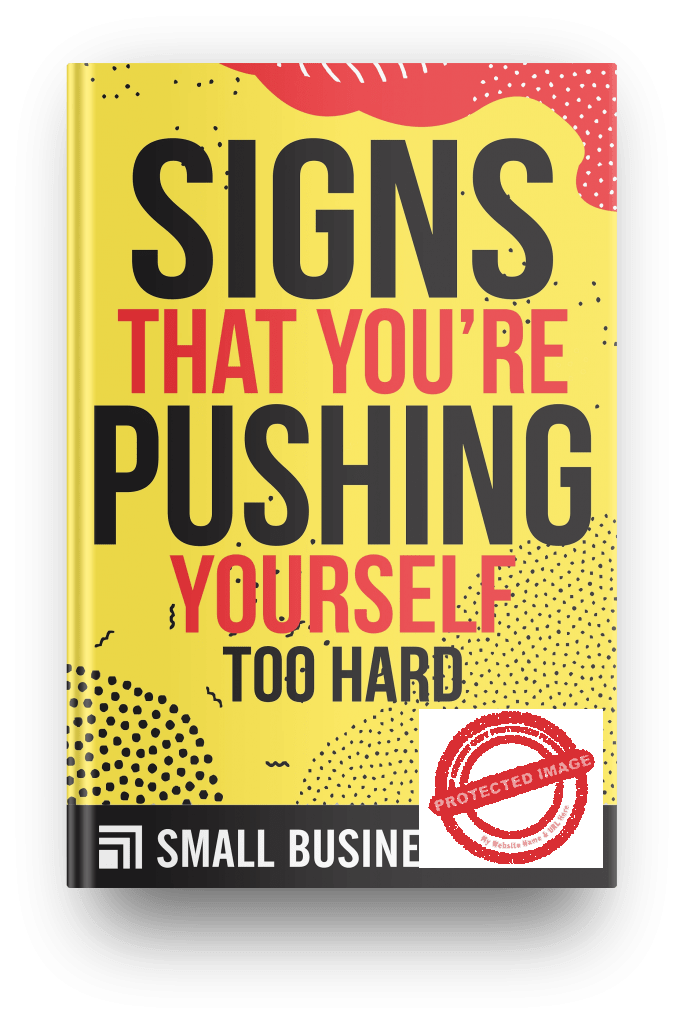Is workplace stress reserved for specific persons? Not at all! Every professional or anyone who has ever had a job will experience stress at work at one point or another. Signs You Are Pushing Yourself Too Hard: Workplace Stress, points out the telltale signs that help you recognize when you are undergoing work-related stress.
Any kind of job will have at least one stressful element to it.
The causes vary from personal issues to policy or managerial problems.
Sometimes you are just pushing yourself too hard.
Work-related stress by itself is normal.
It happens to the best of us.
It should be easily managed with some guidance and coaching.
The big problem is when work stress becomes chronic.
When stress reaches that level it becomes overwhelming.
That is when work-related stress becomes harmful to one’s emotional and physical health.
Understanding Workplace Stress
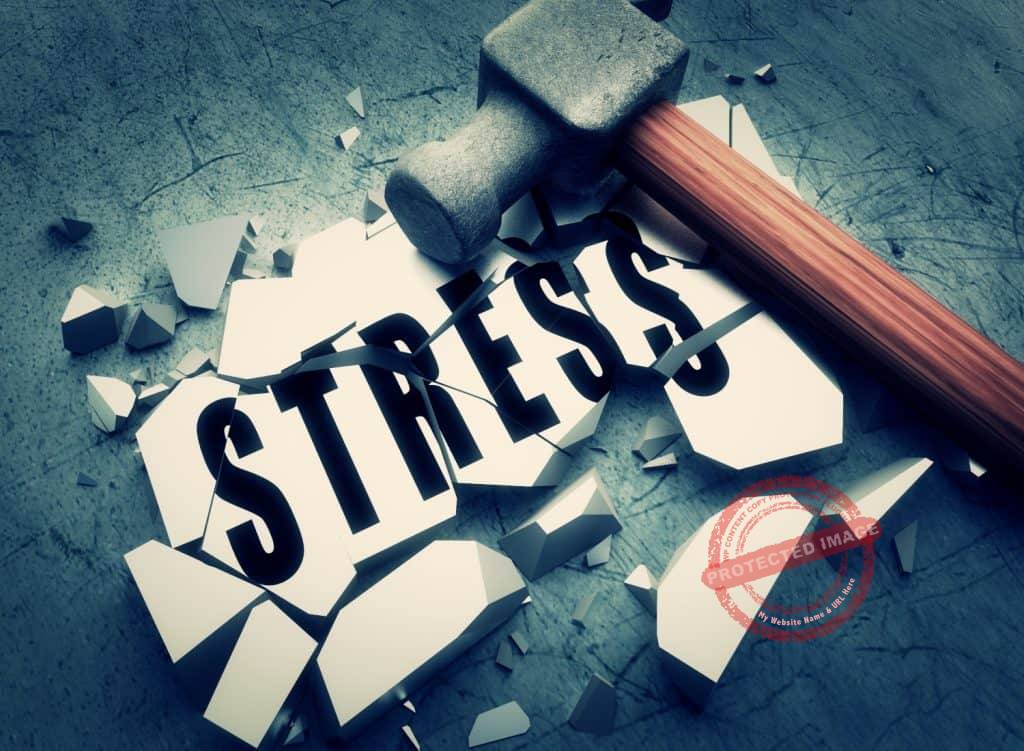
What is stress?
The word stress has been redefined several times over the years.
At one time it was believed that stress is simply pressure coming from one’s environment.
However, it was later changed to refer to the strain experienced by a person.
Today, we define stress in a much more general term.
There is an accepted definition by today’s medical and psychological experts.
It is that stress has more to do with the interaction between a person and the situation that they are facing.
It embraces both the physical and the psychological state of a human being.
Stress occurs when these resources can no longer cope or are insufficient to handle the demands of that situation.
We can say that this modern-day definition reaches out wider than previous definitions. It also recognizes that the nature of stress depends on the factors involved.
It varies from one person to the other.
There are certain situations that may be stressful for you but is manageable for others.
You may see signs you are burning out but you don’t need to have all the signs to know what it is you’re experiencing.
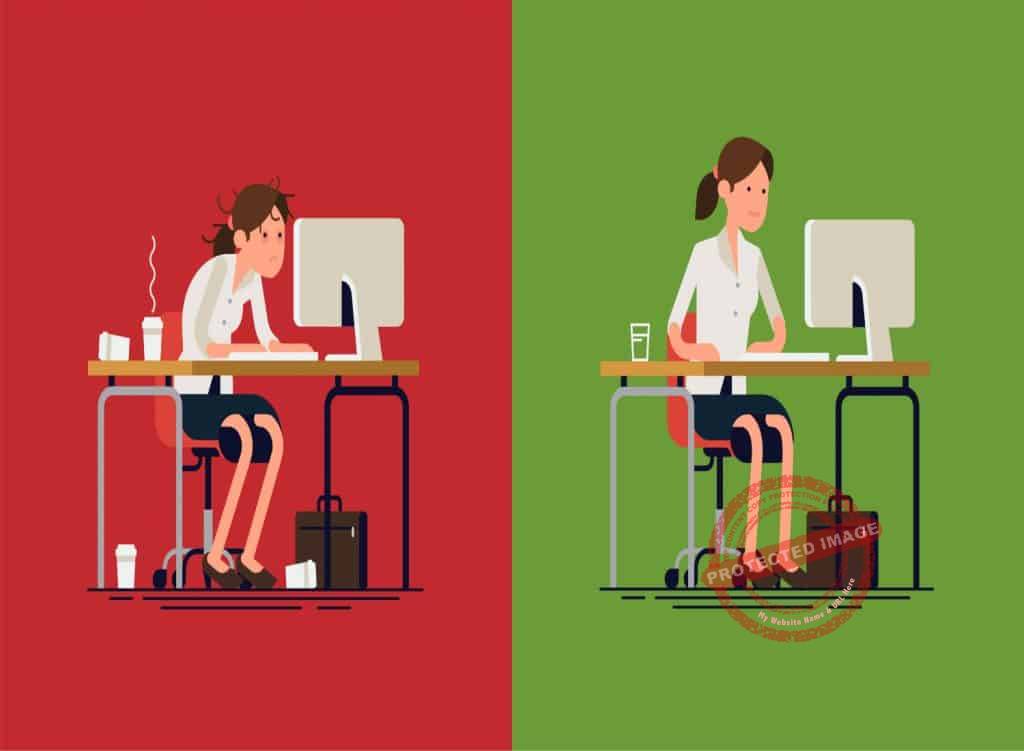
Stress can become a roadblock to the achievement of your goals.
If individual employee goals have been stumped as it were, it will the performance of the entire company.
For example, let’s say your sales team has lost the will to work and succumbed to the stress of work.
You can’t expect them to succeed at hitting sales goals for the current term.
If they don’t meet their sales targets then your company’s sales also go down.
In short, they miss their target, your company misses its goals.
Understanding the nature of stress helps you manage burn-out.
Being Overworked at Work
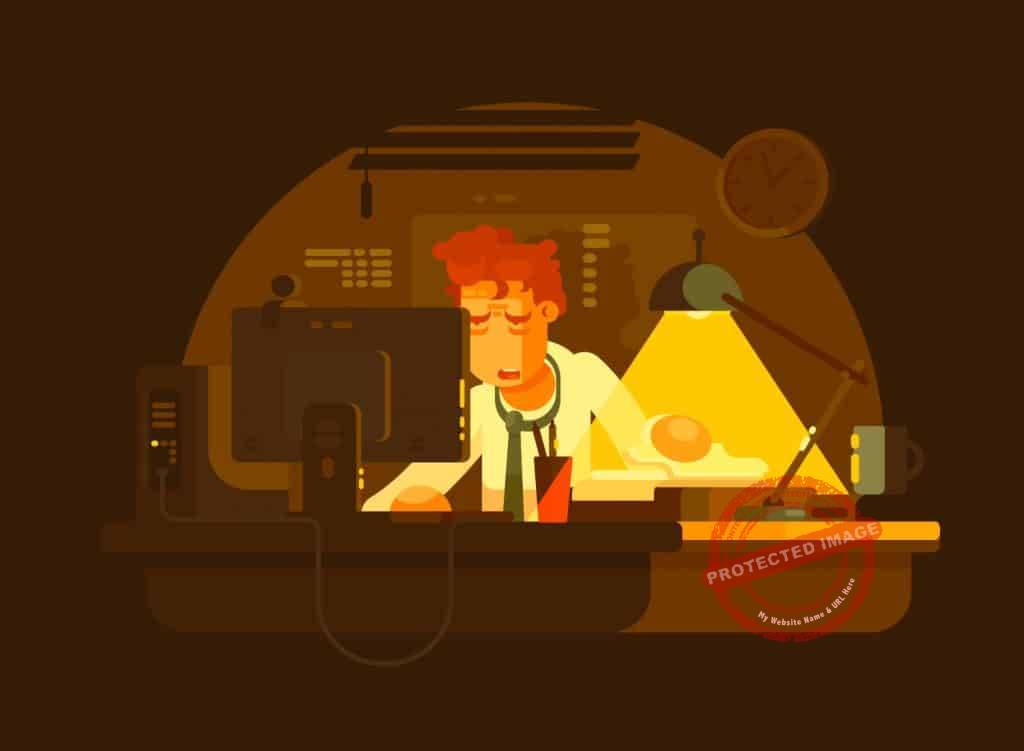
Understanding the nature of stress also helps you to manage burnouts.
By understanding the triggers that lead to stress, you are better able to cope with it in a timelier manner.
The first step to stress management in the office is to identify that there is stress in the workplace.
Remember that it includes more than just the behavior of your employees.
Warning Signs That Workplace Stress Is Present
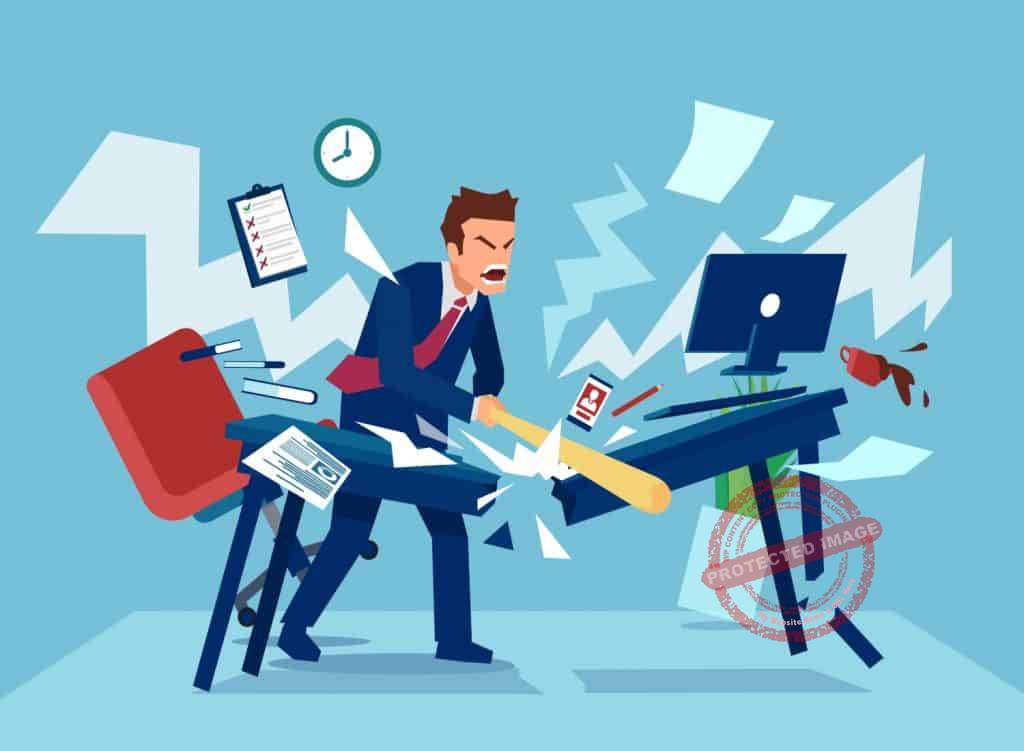
Signs that your employees are pushing themselves hard and experiencing a lot of stress in the workplace occur through changes in their behavior.
Some of these changes are major ones while others are slight and almost unnoticeable.
And a lot of them are only evident to the individual himself.
The non-visual and not easily understood signs include the following:
- Fatigue
- Irritability
- Reduced problem-solving ability
- Depression
- Difficulty concentrating on a task
- Anxiety
Behavioral and other signs that are a lot easier to notice include the following:
- Lack of motivation
- Nausea
- Being more tearful
- Palpitations
- Becoming more aggressive
- Headaches
- Withdrawal

One experiences chronic stress when exposed to stressful conditions for a prolonged period of time.
This can actually lead to dramatic changes in a person’s immunologic, autonomic, cardiovascular, and neuroendocrine functions.
We will point out signs that the employee is pushing too hard or overworked and also go over the situations/conditions in the workplace that are most likely to cause stress.
Some of those include time-limited events like deadlines and such.
Others may be things beyond the employee’s control.
Things like personal and family problems, long commutes, company policies, senior management styles, and others.
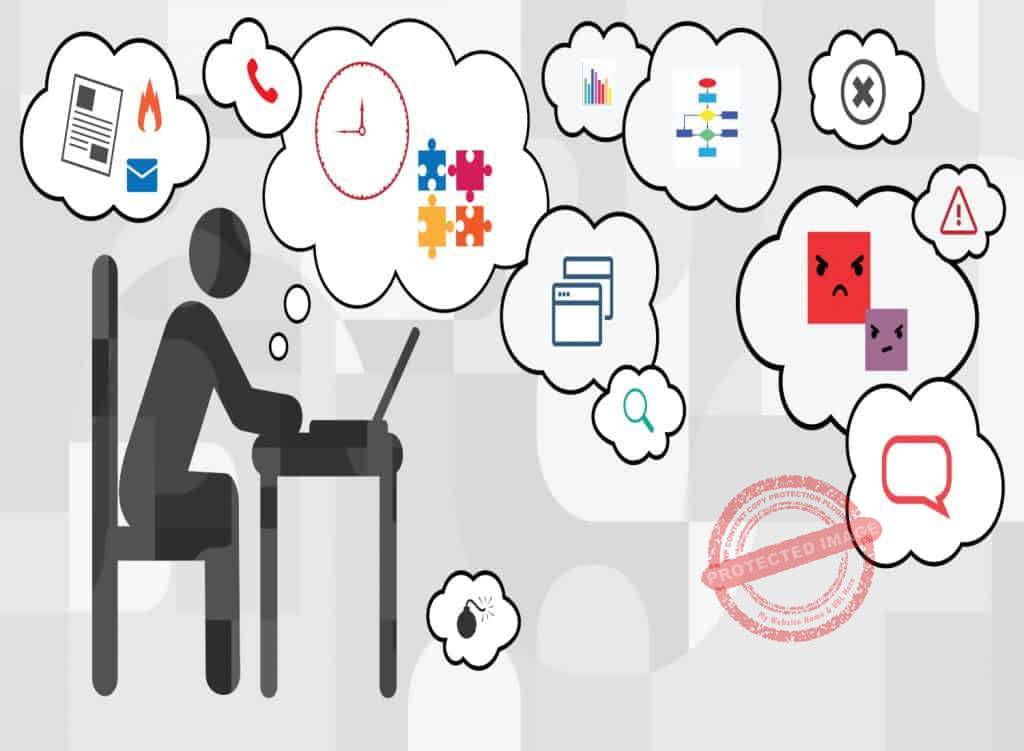
We’ll also go over the different responses, methods, and ways to avoid burnout.
This can be done on the employee or individual level and it can also be done on a management level.
Just remember that good practices in the workplace to manage stress include the following basic principles:
- Identify things that can cause high-stress levels in the workplace
- Pay special attention to processes, procedures, and policies that may be causing long term stress to all employees
- Identify those who are affected by such stressors
- Find out if you are doing enough to prevent stress and what else can be done
Your Defense Against Workplace Stress
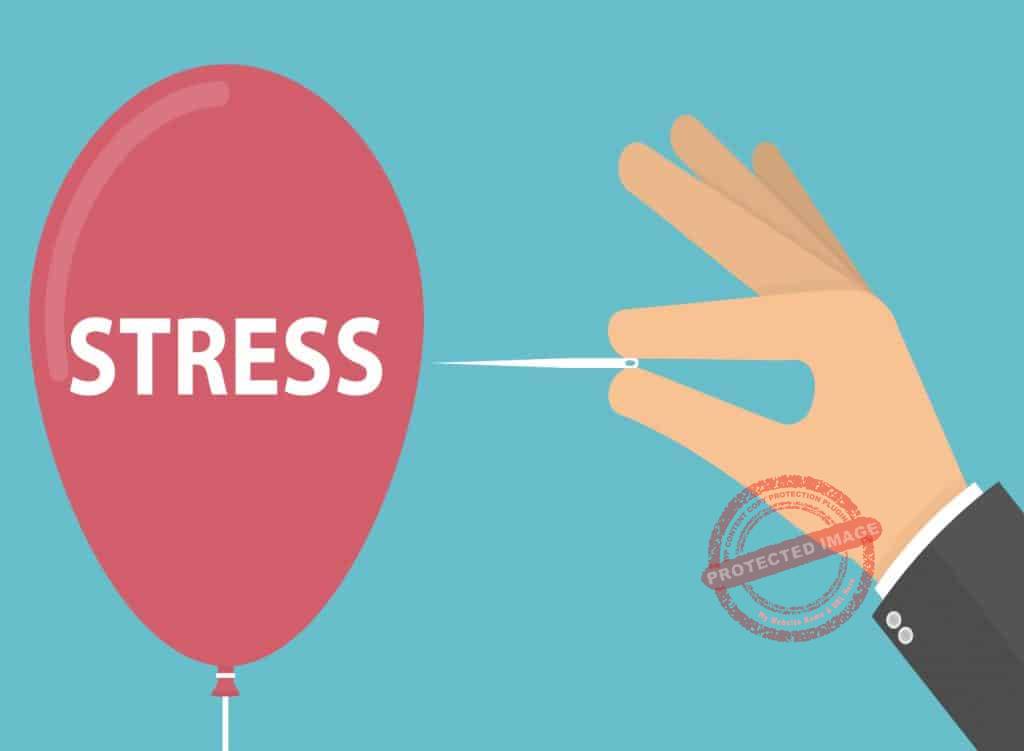
The first step to avoiding burnout is to identify the causes of stress and the degree of stress that you and your employees are experiencing.
There are actually two layers of protection that we human beings turn to.
They are physiological responses that shield us from stress.
They include the following:
Adaptation

Human beings have an adaptive mechanism.
This mechanism allows us to stop reacting to something that we once perceived as a threat.
For instance, if your workplace is located around airplanes landing or taking off nearby (or even right above your office), you might find the situation to be quite annoying or at times threatening.
However, after a while, you become used to it.
After much experience, you learn that a Boeing Airbus 747 passing overhead is very unlikely to crash into your building.
So, you are no longer react to it as a threat.
In other words, you have already adapted to it.
Alarm
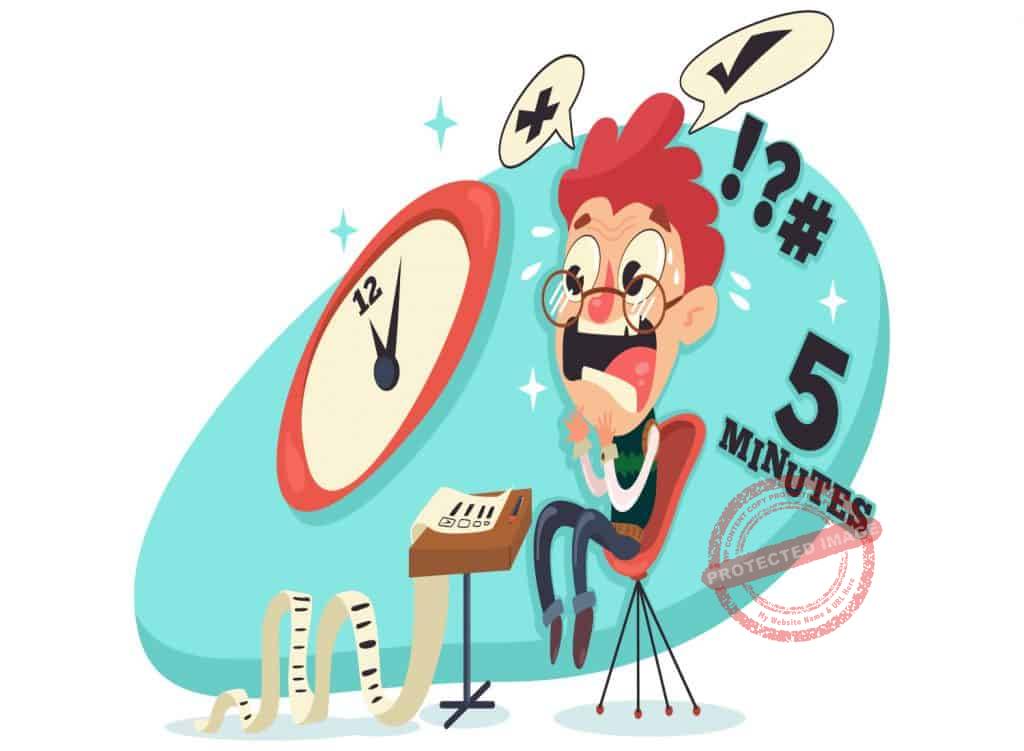
Whenever you perceive a threat, your body gives off a physiological response.
Your muscles begin to tense, you will freeze (like a deer freezing in car headlights).
Also, your heart rate and your blood pressure rise as well as your breathing rate.
This happens no matter what sort of threat you experience.
It can happen when a mad bull rushes in your direction.
This can also happen when you are faced with an abuser.
When you are verbally abused you will at first exhibit this alarm response.
Whenever you are being bullied, you will go through the fight or flight response.

Stress and burnouts occur when an individual cannot take advantage of these two protective responses.
Either these mechanisms are no longer functioning properly or they aren’t adequate for the challenges being faced by the individual.
Signs That You are Pushing too Hard and Burning Out

David Ballard, the head of the Psychologically Healthy Workplace Program of the American Psychological Association has explained that job burnout is highly related to chronic stress.
Burnouts occur over an extended period of time.
You experience exhaustion that causes you to lose interest in a lot of things over a period of time.
This will result eventually in a decline in your performance in the workplace.
But that is not all.
If you do nothing about it then chronic stress can also affect your relationships, health, and overall happiness.
To combat a burnout or workplace stress, you should be able to identify the warning signs that you are pushing too hard.
These signs include the following:
Negative Emotions Such As Cynicism and Frustration
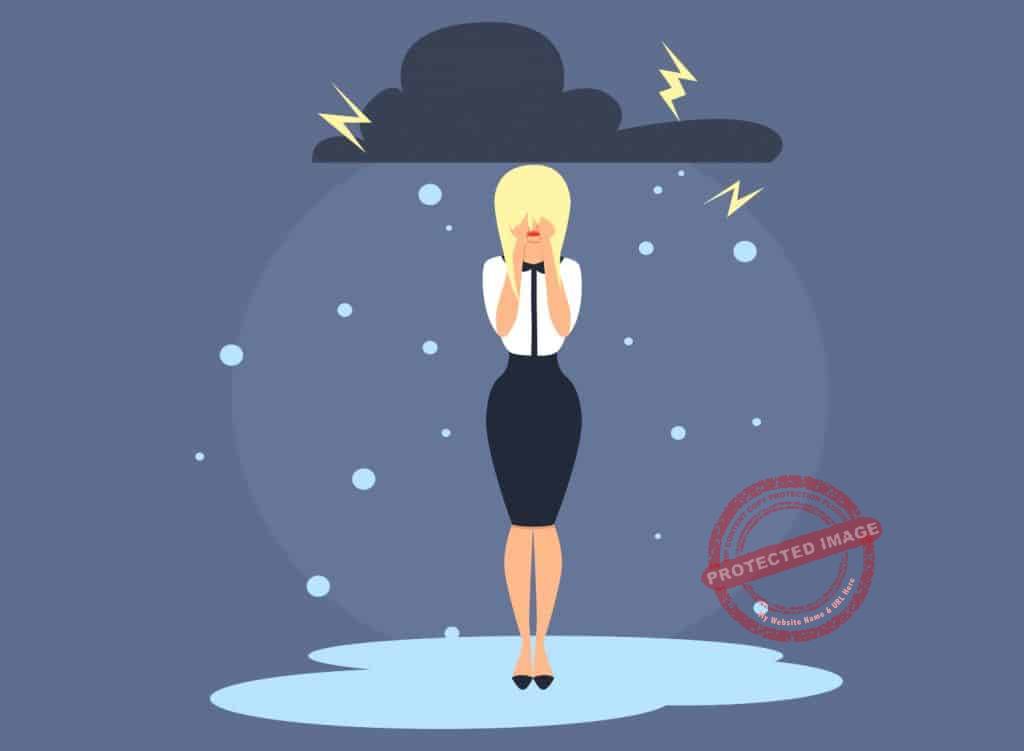
You feel that nothing you do in your job actually matters.
Also, you may feel let-down about everything.
Additionally, you may also experience other negative feelings such as gloom.
This doesn’t mean that the experience you have is a continuous stream of negative emotions.
You experience them from time to time.
What is more important to notice is that these emotions are becoming more unusual and feel more intense than normal.
Exhaustion

This is one of the clear signs of a burnout or workplace stress that shows you are pushing too hard.
You tend to feel tired pretty much all the time.
Physical, mental, and even emotional stressors can cause exhaustion.
It is that feeling that you are like a spent soul unable to do or contribute anything to any cause.
The Lack of Motivation

Related to exhaustion is a lack of motivation.
The moment you lose that motivation or excitement to go to work then that may be a clear sign of burnout coming along.
Do you find it hard to get out of bed in the morning nowadays whereas you used to be so energized before?
Do you anticipate clocking out than clocking in?
Is your mind preoccupied with employee rights that you want to contest?
Interpersonal Problems

There are two ways in which this would manifest itself.
One way is that you tune out of any conversation or interaction with others or with a group.
The second way this happens is when you easily get in conflict with other people.
Job Performance Issues
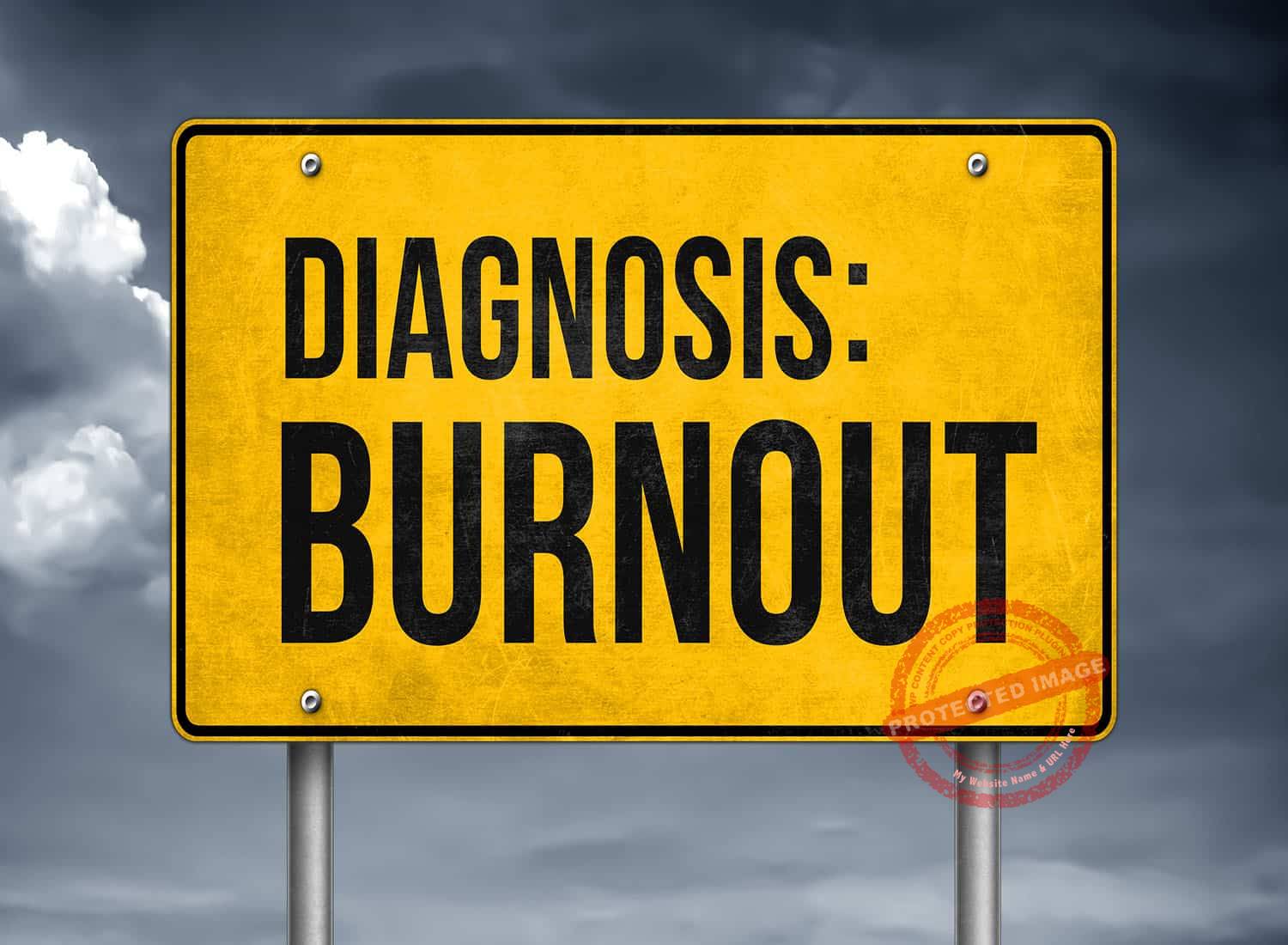
One of the key signs of workplace stress or that you are pushing too hard is that your performance in recent years has been on a steady decline.
Remember that burnout happens over extended periods; it’s usually more of a long-term issue.
However, there are those occasional performance slumps that happen too, which can also indicate a possible burnout.
And then there is also the long-term issue which is indicative of a long-term burnout.
Cognitive Problems
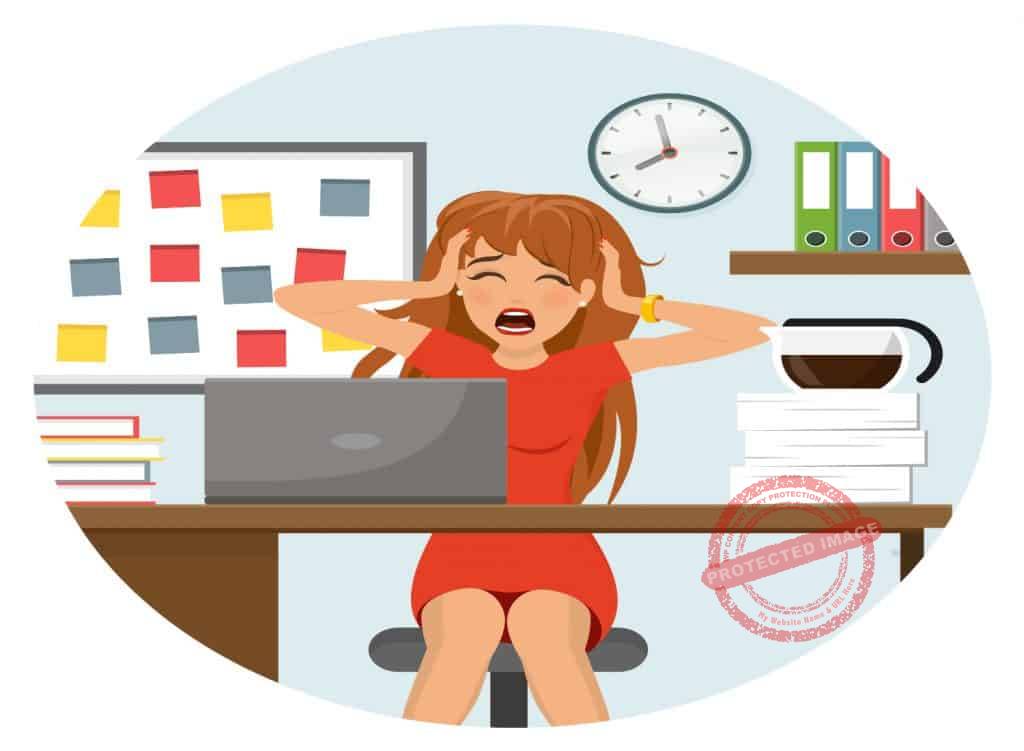
People who are undergoing a lot of chronic stress and for extended periods usually experience cognitive problems.
Things like difficulty paying attention or losing the ability to focus and concentrate on tasks.
You see when we are under stress our attention is focused on the negative.
We tend to spend a lot of mental ability or power on that instead of other things.
Our brains are wired to handle stress only on short bursts as it were.
We focus on the negative so that we can resolve it rather quickly.
But when we are constantly under stress we don’t get to return to normal brain function quickly.
Eventually, it is difficult for us to focus on other things since we are stuck up on the negative.
When that happens you know you are pushing yourself too hard.
Health Problems

When you are exposed to stress for a prolonged period, you will be exposed to a variety of health problems.
Examples of which include obesity, depression, heart disease, as well as digestive problems.
A 2006 study suggests that workplace stress can affect a country’s GNP [Gross National Product].
The study observed that it contributed to an early retirement due to bad health.
It is also a cause for sickness absences.
This should be enough incentive for managers and business owners to create policies on how to avoid burnout.
Overall Decreased Satisfaction

Health problems are only one of the issues an overworked employee faces.
Another sign is when you are dissatisfied with your home life as well as your professional life.
There is an overall feeling of being stuck in life no matter what you do.
This dissatisfaction also includes other aspects of your life including community work, church, or any other endeavors.
Thinking About Work While You’re Not At Work
Do you tend to think about work even though you’re at home?
Is it the only thing preoccupying your mind most of the time?
If that is the case then you might be overworked at work.
Unhealthy Coping Strategies

People use unhealthy coping strategies when dealing with stress.
This includes living an inactive lifestyle, unhealthy eating habits, smoking, increased alcohol consumption and losing sleep.
People turn to these habits to relieve themselves of the pressures they experience because of work-related stress.
A Three-Pronged Approach to Workplace Stress Management
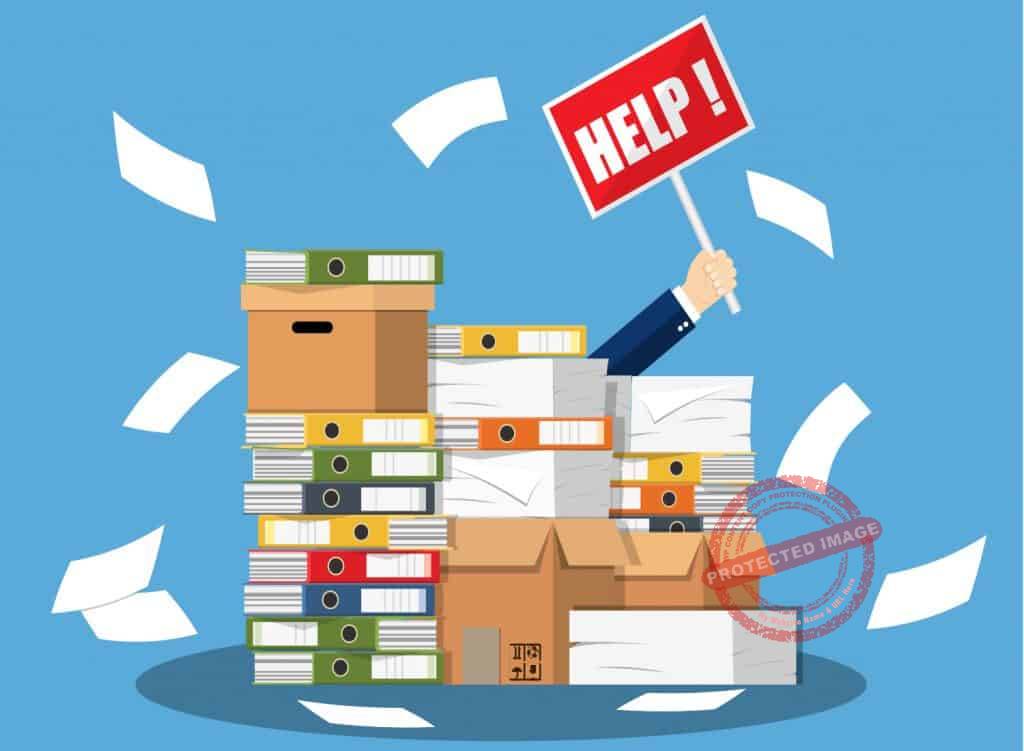
Now that you know the signs you are pushing yourself too hard.
The next step is to formulate strategies and tactics to manage workplace stress and burnout.
From here on, business owners and managers should take on a three-pronged approach to resolve workplace stress.
They include the following general phases:
- Risk assessment
- Training and development
- Stress counseling and support
Ways To Avoid Pushing too Hard or Burning Out
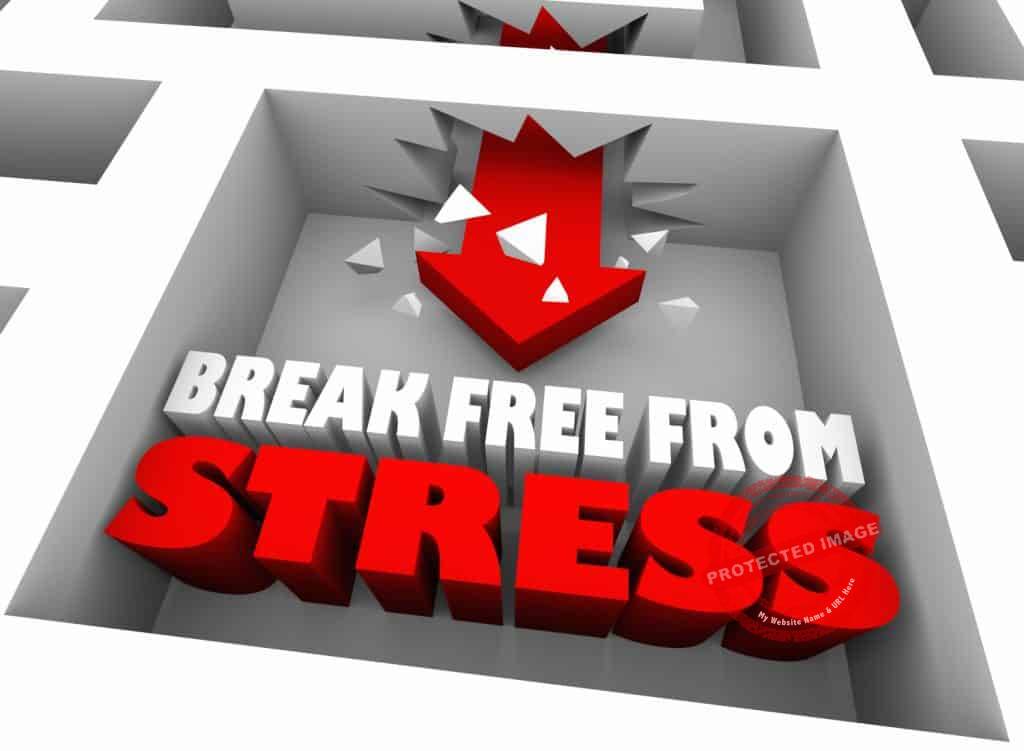
The process of avoiding burnout or helping burned-out employees turn things around is two-fold.
On the one hand, there should be individual stress and burnout assessment and coping strategies.
On the other hand, there is also organizational stress management such as policies, programs, and other measures that can be enacted by management.
As the manager or business owner, it is your responsibility to provide these employee rights.
Employee Level Workplace Stress and Burnout Management

Part of the entire process to prevent and manage burnouts should be done on the individual or employee level.
Management should train everyone on how to identify the above-mentioned signs of stress and burnout.
They can conduct this training of individuals either in individual or group psychology services.
These services will include clinical services and counseling.
They will also involve health and occupation coaching.
The things that individuals can do include:
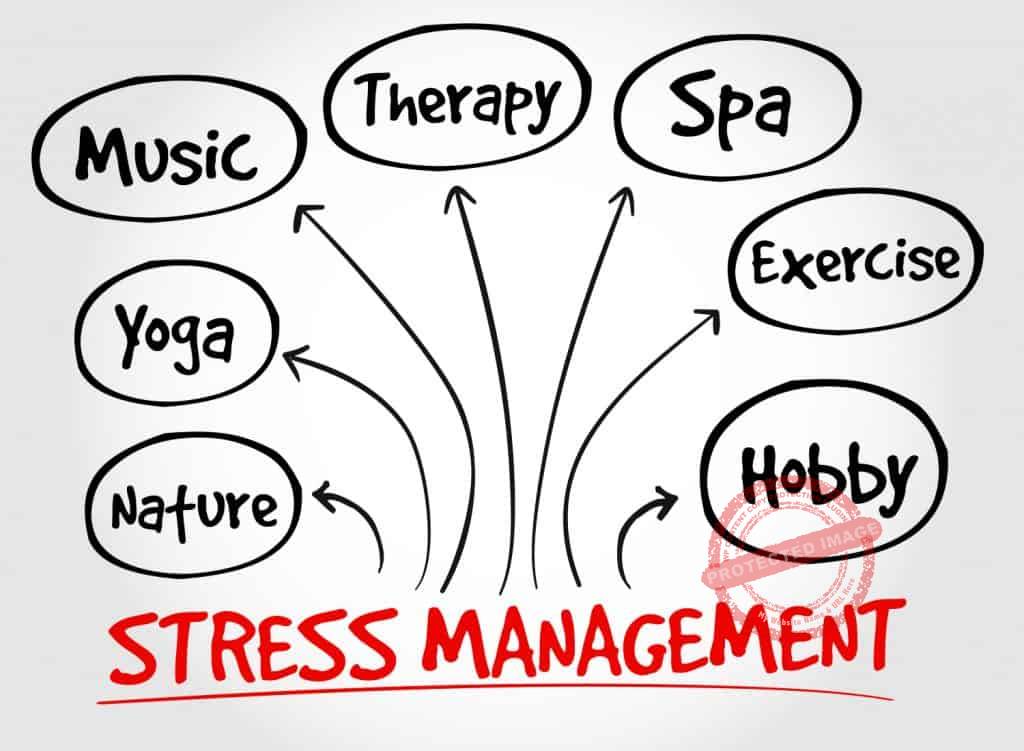
- Practicing work processes in a low-stress environment
- Active coping skills
- Relaxation skills
- Developing healthy lifestyle habits
- Developing individual plans for managing stressors
- Improve the ability to analyze situations
- Interrupt behavior patterns that lead to or contribute to stress
- Become more aware of the signs of stress
The following is a sample action plan that you can use to train employees.
Note that it is not a detailed plan since this should be worked out individually with each employee.
- Track your stressors through activities like journaling etc.
- Develop healthy responses with practice
- Establish boundaries
- Allow yourself time to recharge
- Learn relaxation techniques that work for you
- Meet with your manager/supervisor
- Find support
Workplace Stress and Burnout Management on the Organizational Level

The other half of the success formula for preventing and managing burnout and stress levels in the workplace is on the organizational level.
Believe it or not the organization in your place of work also creates a lot of stress.
There are many types of interventions on the organizational and management level.
Part of it is structural, which includes changing the physical environment.
This could mean allowing employees the freedom to design or tweak their workspace.
Other measures include adjusting work schedules, staffing levels, providing social support, and providing more control over their work.
Also, participation in procedures and processes, and providing social support among others.
When crafting policies, managers and business owners must take into account several key issues:
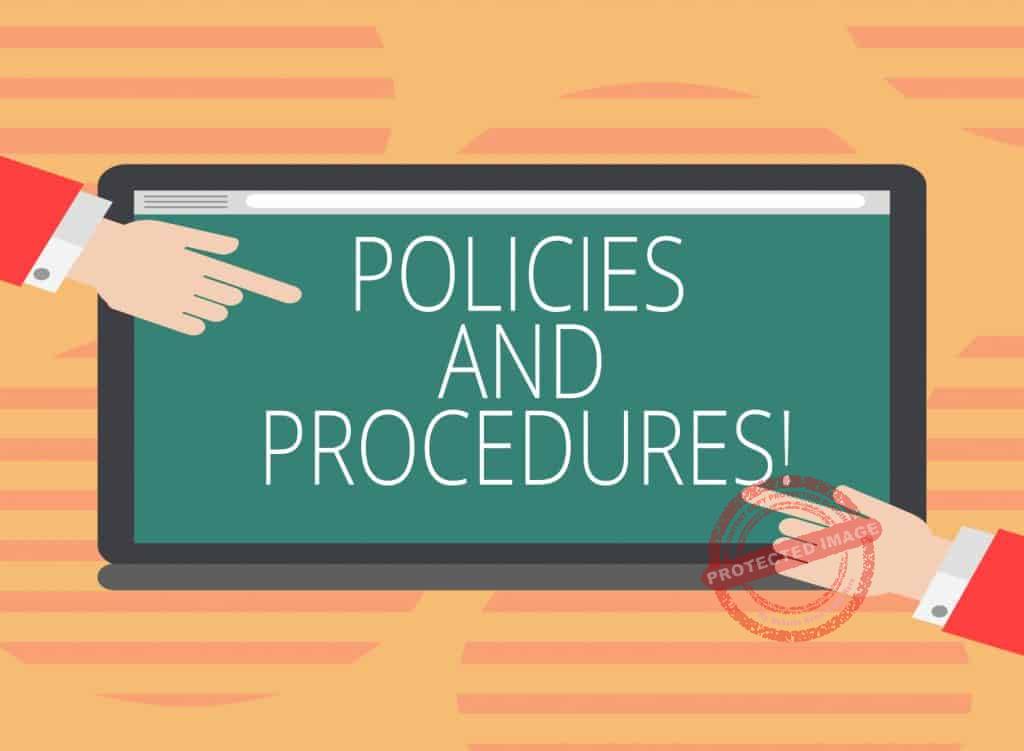
- The number of employees exposed to stress and burnout
- The extent to which these employees are exposed to it
- The likelihood of ill health and other ill effects of burnout and stress on employees from different departments
Studies conducted both in and out of the USA show that combining organization level approaches with individual-level interventions helps employees avoid burnout.
For example, whenever management provides support and participates in solving problems within the workplace, it means that they allowed employees to pitch solutions.
This was seen as an improvement in the company’s team working climate.
Training empowers employees to cope with stress and burnout.
Organizational level approaches pave the way to reinforce whatever training employees have received.
When last did you experience work-related stress and how did you or your management manage it?
Do share!
Click on Buy Now For a PDF Version of This Blog Post
 |
